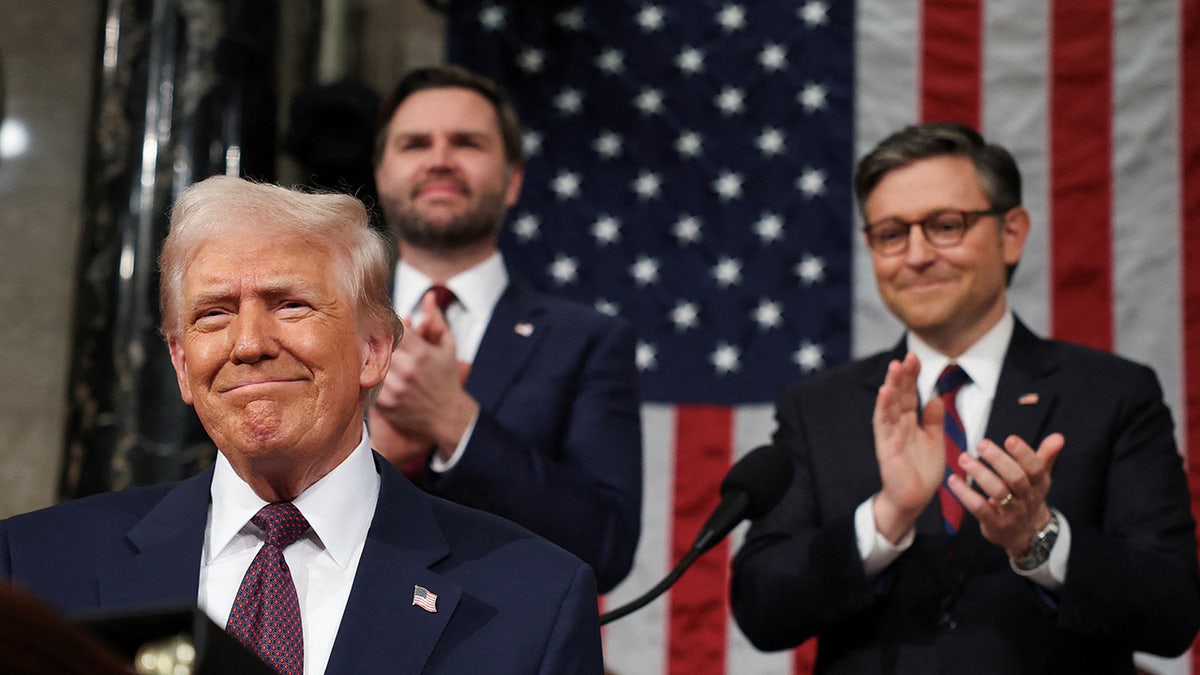
Trump Declares "America is Back" in First Address to Joint Session of Congress Since Return to Office, Marked by Protests and Partisan Divide
President Donald Trump delivered his first address to a joint session of Congress on Tuesday evening, marking a significant moment in his return to the Oval Office in January. The speech, though resembling a State of the Union address in format, carried a slightly different title reflecting his absence from the presidency in the preceding year. Trump wasted no time in declaring his renewed vision for the nation, asserting "To my fellow citizens, America is back," immediately after thanking members of Congress and First Lady Melania Trump.
The address was characterized by a confident and assertive tone, with Trump emphasizing the rapid pace of his administration’s actions in the first six weeks of his second term. "Six weeks ago, I stood beneath the dome of this Capitol and proclaimed the dawn of the golden Age of America," he stated, before claiming, "From that moment on, it has been nothing but swift and unrelenting action to usher in the greatest and most successful era in the history of our country. We have accomplished more in 43 days than most administrations accomplished in four years or eight years. And we are just getting started." The President’s bold pronouncements were met with enthusiastic chants of "USA, USA, USA" from the audience, showcasing the strong support from conservative lawmakers.
However, the address was also notable for the deep partisan divisions it exposed. Trump’s arrival at the podium, shortly after 9:15 p.m. Eastern Standard Time, was greeted by cheers from Republicans, while Democrats largely remained seated, signaling their disapproval. This stark contrast set the tone for the rest of the evening, as protests erupted soon after the President began speaking.
The most significant disruption involved Representative Al Green, a Democrat from Texas, who refused to stop yelling and sit down during the speech. Speaker of the House Mike Johnson repeatedly demanded that Green cease his protest, ultimately ordering his removal from the chamber. "Our members are directed to uphold and maintain decorum in the House, and to cease any further disruptions — that’s your warning," Johnson declared, adding, "Members are engaging in willful and continuing breach of decorum, and the chair is prepared to direct the Sergeant at Arms to restore order to the joint session. Mr. Greene, take your seat. Take your seat." Despite the Speaker’s repeated warnings, Green persisted, leading to his eventual removal, underscoring the heightened tensions and political animosity surrounding the President’s address.
Ahead of the address, the White House had revealed that "The Renewal of the American Dream" would serve as the overarching theme. The speech was structured around four key pillars: highlighting the accomplishments of Trump’s second term thus far, both domestically and internationally; emphasizing the administration’s efforts to stimulate the economy; renewing the call for Congress to approve additional funding for border security; and outlining the President’s plans for promoting peace around the globe.
The address was preceded by significant media attention and political maneuvering. A six-figure ad buy was launched to promote the President’s tax plan in conjunction with the speech, emphasizing the administration’s commitment to economic growth. The administration also touted the "unprecedented level of actions" taken during Trump’s first seven weeks back in office, aiming to project an image of decisive leadership.
Notably, Trump eschewed traditional formal speech preparation, choosing not to engage in coaching on gestures or delivery. However, he was actively involved in the editing process of the speech itself, ensuring that it reflected his personal vision and priorities.
Several Democratic members of Congress had announced their intention to boycott Trump’s address prior to Tuesday, including Representatives Don Beyer of Virginia and Alexandria Ocasio-Cortez. Senator Chris Murphy of Connecticut also chose to skip the event, instead holding a live "prebuttal" of the speech, offering a counter-narrative to the President’s message.
In a show of solidarity and protest, numerous Democratic congresswomen who attended the speech were seen wearing pink, a symbolic gesture intended to highlight their opposition to Trump and his policies, particularly those they believe disproportionately impact women.
The address, while intended to unify the nation behind President Trump’s vision, ultimately served to underscore the deep divisions that continue to characterize American politics. The protests, boycotts, and partisan displays during the event highlighted the challenges the President faces in building consensus and achieving his policy goals in a deeply polarized environment. The incident involving Representative Green’s removal is a microcosm of the larger tensions at play, demonstrating the willingness of some Democrats to actively resist the President’s agenda, even if it means disrupting established norms and protocols. The success of Trump’s second term will likely depend on his ability to navigate these divisions and find common ground with members of the opposing party, a task that will undoubtedly prove difficult given the current political climate.
